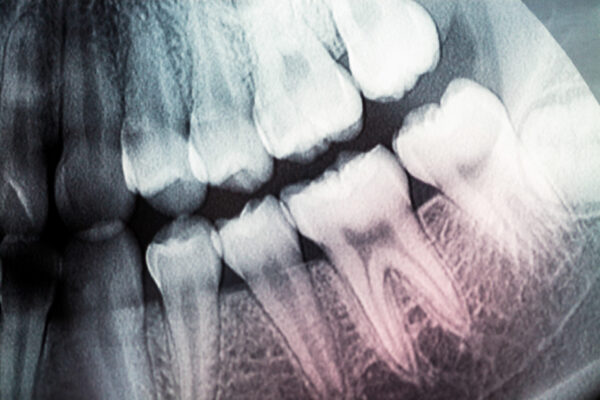- Cone Beam CT radiography is an integral part of diagnostic imaging in dentistry.
- CBCT imaging reproduces 3-D anatomy, important in dental implant planning and TMJ, airway, and orthodontic assessments.
- CBCT imaging enhances diagnostic capabilities, with applicable uses for oral pathology, root canal procedures, and as an adjunct to conventional intraoral 2-D radiographs.
- An official CBCT Report (or Radiology Report) by an Oral & Maxillofacial Radiologist should accompany each CBCT scan, ensuring thorough interpretation to meet the Standard of Care.
Cone beam computed tomography (CBCT) is a modern imaging technique that uses x-ray technology to generate a 3-D digital representation of an object. In dentistry, CBCT has become an important diagnostic tool because it allows dentists to view the teeth and jaws in all three dimensions, enhancing diagnosis and treatment planning. There are many applications for CBCT in dentistry, and each scan or study is typically accompanied by a CBCT Report. Oral & Maxillofacial Radiologists have additional years of formal training in anatomy and interpretation beyond dental school and are certified by an ADA-accredited residency program.
Implant Placement
CBCT technology is frequently used to determine the optimal location for implant placement. The 3-D image produced by CBCT allows dentists to visualize the patient’s bone structure and determine the size, shape, and position of the implant. This helps to ensure that the implant is placed in the correct position and orientation, enhancing osseointegration and overall success.
Orthodontics
CBCT technology has become a valuable tool in orthodontic treatment planning. Orthodontists can use CBCT images to evaluate the patient’s teeth and jaws in three dimensions, which helps to determine the best course of treatment. CBCT images also help orthodontists in airway analysis as well as to identify any structural abnormalities that may impact treatment, such as impacted teeth, bone deficiencies, and dental and skeletal asymmetry.
Endodontics
CBCT can be used in endodontic procedures to diagnose and treat root canal issues. CBCT images can provide valuable information about the root canal anatomy, including the number, size, shape, and location of canals, as well as the presence of anatomical variations or abnormalities. This information can help dentists to identify the root cause of the problem and plan the appropriate treatment. For teeth with existing unsuccessful root canal treatments, CBCT imaging may provide clues as to the underlying cause and whether re-treatment might be successful.
Temporomandibular Joints (TMJ)
CBCT technology can be used to evaluate the TMJ and surrounding structures. The 3-D image produced by CBCT allows dentists to visualize the position of the condyles, the shape and size of the joint space, and any bony abnormalities. This information can help to diagnose TMJ disorders (TMD) and plan appropriate treatment. CBCT is not the modality of choice for soft tissue pathology but may offer some insight into potential temporomandibular disc displacements, especially when scanned in both open- and closed-mouth positions.
Airway
CBCT technology can be used to evaluate the airway and surrounding structures. The 3-D image produced by CBCT allows dentists to visualize the size and shape of the airway, the position of the tongue and soft tissues, and any bony or soft tissue abnormalities. This information can help to diagnose airway obstruction and plan appropriate treatment.
In conclusion, CBCT technology has become an important tool in modern dentistry. Its ability to produce detailed, 3-D images of the teeth, jaws, and surrounding structures allows dentists to make more accurate diagnoses and plan more effective treatments – an official CBCT Report by an Oral & Maxillofacial Radiologist will ensure the Standard of Care is met. CBCT is particularly useful in implant placement, orthodontic treatment planning, endodontics, TMJ evaluation, and airway evaluation. As CBCT technology continues to advance, it is likely that its applications in dentistry will continue to expand, further improving patient care and treatment outcomes.

